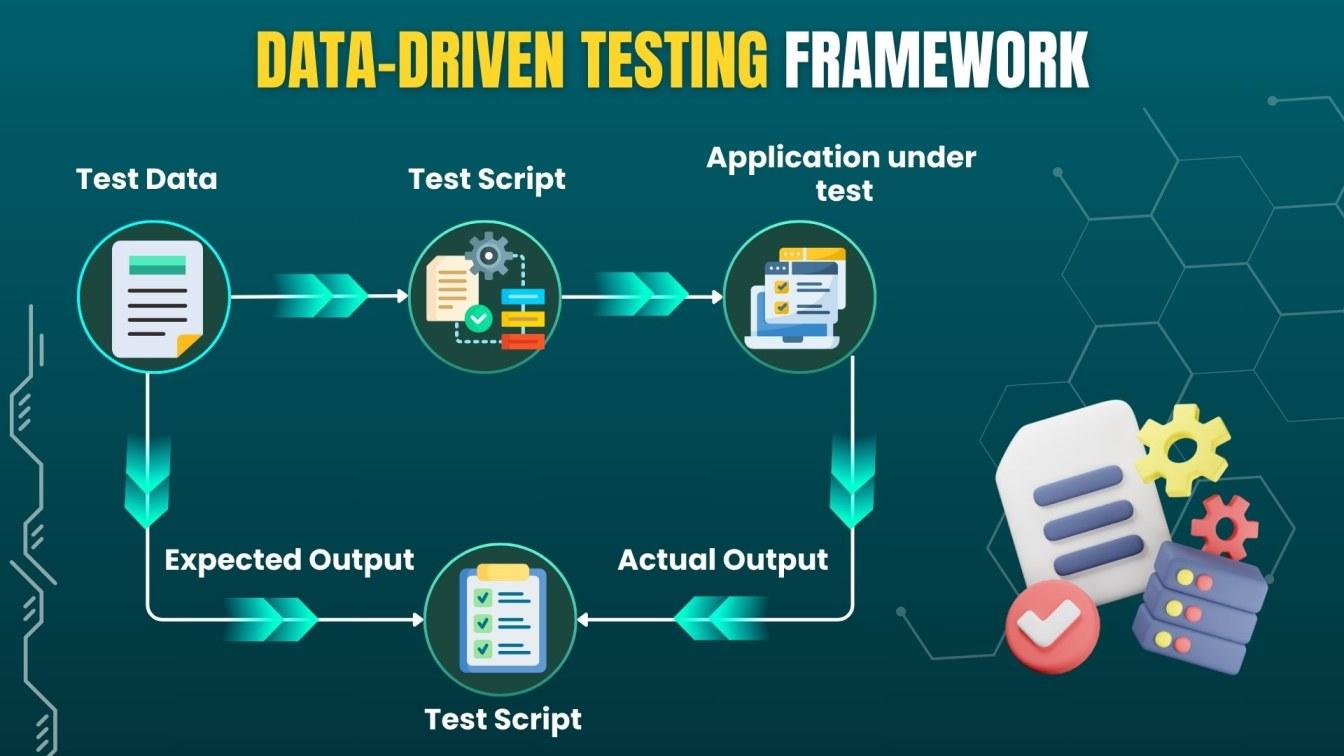What’s the Role of Selenium in Data-Driven Testing Today?

Introduction
In today’s fast-paced digital world, software applications must be reliable, user-friendly, and bug-free. With constant updates and feature releases, ensuring software quality has become more challenging than ever. This is where test automation steps in. Among the various test automation tools available, Selenium has earned a top spot. Specifically, Selenium plays a vital role in data-driven testing, a strategy that separates test scripts from test data, making tests scalable and maintainable.
If you're considering a Selenium certification online or planning to enroll in an online Selenium training program, understanding Selenium’s role in data-driven testing is essential. This guide explores how Selenium integrates into data-driven testing frameworks, why it matters, and how you can leverage it to advance your career in test automation.
What is Data-Driven Testing?
Data-driven testing (DDT) is a testing methodology where test input and output values are read from external data files like Excel spreadsheets, CSV files, XML, or databases. Instead of hard-coding values within the test scripts, DDT keeps data separate, making it easier to run the same test scenario multiple times with different data sets.
Key Benefits of Data-Driven Testing:
-
Reduces redundancy in test scripts
-
Enhances test coverage with varied data inputs
-
Simplifies maintenance and scalability
-
Supports quick updates to test data without modifying code
Example: Imagine testing a login page with 50 different username-password combinations. Without DDT, you'd need 50 separate scripts. With DDT, one script can run 50 times using different data sets.
How Selenium Supports Data-Driven Testing
Selenium is a powerful, open-source automation tool that supports multiple programming languages like Java, Python, C#, and JavaScript. It’s highly compatible with data-driven testing because it allows testers to read external data and loop through test cases efficiently.
Selenium’s Data-Driven Capabilities:
-
Seamless integration with data sources like Excel, CSV, and databases
-
Support for libraries like Apache POI (Java) and openpyxl (Python) for reading and writing data
-
Flexibility to build frameworks such as Hybrid, Keyword-Driven, and Data-Driven
Real-World Example: Selenium with Excel (Java)
import org.apache.poi.xssf.usermodel.XSSFWorkbook;
import org.apache.poi.ss.usermodel.*;
import java.io.FileInputStream;
public class ExcelDataRead {
public static void main(String[] args) throws Exception {
FileInputStream file = new FileInputStream("TestData.xlsx");
XSSFWorkbook workbook = new XSSFWorkbook(file);
Sheet sheet = workbook.getSheet("LoginData");
for (Row row : sheet) {
String username = row.getCell(0).getStringCellValue();
String password = row.getCell(1).getStringCellValue();
System.out.println("Username: " + username + ", Password: " + password);
}
workbook.close();
file.close();
}
}
This code reads usernames and passwords from an Excel sheet, which can then be passed into Selenium test scripts.
Why Selenium Stands Out for Data-Driven Testing
Selenium has several advantages when it comes to implementing data-driven frameworks. It allows testers to design flexible and reusable test cases by separating test logic from test data. This means a single test script can run multiple times with different inputs, making test automation far more scalable and efficient.
Through structured data inputs such as Excel, CSV, or databases, Selenium seamlessly drives web UI tests across various scenarios. For professionals pursuing Test automation training, understanding how Selenium fits into data-driven testing is crucial because it not only builds foundational skills but also prepares them for real-world projects where maintainability and coverage are critical.
-
Open-Source and Free: No licensing costs, making it suitable for startups and enterprises alike.
-
Language Support: Compatible with Java, Python, C#, and more.
-
Browser Compatibility: Supports Chrome, Firefox, Safari, Edge, and others.
-
Framework Flexibility: Can be easily integrated with testing frameworks like TestNG, JUnit, and NUnit.
-
Community Support: A vast global community for resources, troubleshooting, and knowledge sharing.
Industry Insight: According to a 2023 survey by Test Automation University, Selenium remains the most popular automation tool, used by over 65% of QA professionals worldwide.
Building a Data-Driven Framework with Selenium
To effectively use Selenium in data-driven testing, it’s best to build a structured framework. Here’s a simple guide:
1. Choose Your Language and Tools
-
Java + Selenium + TestNG + Apache POI for Excel
-
Python + Selenium + openpyxl
2. Set Up Your Test Data Source
-
Create an Excel or CSV file with relevant test data
3. Design Your Test Script
-
Use a loop to read data from the file
-
Integrate Selenium actions within the loop
4. Execute and Report
-
Use TestNG or JUnit for test management and reporting
Sample Folder Structure:
DataDrivenFramework/
├── data/
│ └── TestData.xlsx
├── src/
│ └── tests/
│ └── LoginTest.java
├── lib/
│ └── apache-poi.jar
└── testng.xml
Real-World Applications and Case Studies
Case Study: E-commerce Application Testing
An e-commerce company needed to test their payment gateway with 100 different card details and transaction amounts. Manual testing was time-consuming and error-prone. By integrating Selenium with a data-driven framework using Excel, they reduced test execution time by 80% and increased defect detection by 30%.
Industry Use Cases:
-
Banking apps testing multiple customer credentials
-
Healthcare apps verifying patient records
-
Travel booking systems checking different destination and price combinations
Career Benefits of Learning Selenium for Data-Driven Testing
Learning Selenium isn’t just about knowing a tool, it's about opening doors to better job opportunities and professional growth. Enrolling in an online Selenium training program or a Selenium course online can give you hands-on experience in building data-driven frameworks.
Advantages:
-
High demand for Selenium testers in the job market
-
Competitive salaries with automation expertise
-
Remote and freelance opportunities
-
Career progression to roles like Test Automation Architect and QA Lead
Salary Insight: According to Glassdoor, Selenium automation testers in the US earn an average of $85,000 per year, with senior roles exceeding $120,000.
How to Get Started: Recommended Selenium Certification Online
If you’re new to test automation, starting with a Selenium certification online is a smart move. Many platforms offer beginner to advanced courses covering data-driven testing frameworks.
Popular Course Topics:
-
Selenium WebDriver basics
-
Data-driven framework creation
-
Integration with TestNG and Apache POI
-
Real-world projects and case studies
Recommended Platforms:
-
Udemy
-
Coursera
-
Test Automation University
Key Takeaways
-
Data-driven testing enhances test coverage and reduces maintenance.
-
Selenium seamlessly integrates with external data sources like Excel and CSV.
-
Real-world applications of data-driven testing range from e-commerce to healthcare.
-
A Selenium certification online can significantly boost your career.
-
Building data-driven frameworks improves automation efficiency and scalability.
Conclusion
Selenium remains at the forefront of test automation training and practice, especially for data-driven testing frameworks. By separating test data from test scripts, QA teams achieve better test management, enhanced flexibility, and improved defect detection rates.
If you’re aiming to future-proof your QA career, enrolling in an online Selenium training program or pursuing a Selenium course online is a practical and rewarding step.
Take action today, start your Selenium course online and transform your automation skills!
- Art
- Causes
- Crafts
- Dance
- Drinks
- Film
- Fitness
- Food
- Games
- Gardening
- Health
- Home
- Literature
- Music
- Networking
- Other
- Party
- Religion
- Shopping
- Sports
- Theater
- Wellness



